Estimated reading time 12 minutes, 5 seconds.
There’s definitely something different about the HondaJet.
Its novel configuration elicits comments, curiosity and speculation. It’s certainly innovative, but aviation history is littered with “revolutionary” but ultimately unsuccessful designs, and it can be hard to tell “curb appeal” from genuine technology.

Expectations are high when it’s the manufacturer’s first design, and especially when that manufacturer is Honda.
Skies was invited to Honda Aircraft Company headquarters in Greensboro, N.C., to fly the HA-420 HondaJet, which proved to be a pleasant, well-engineered airplane; an assembly of clever and practical innovations, each contributing to a very impressive capability.
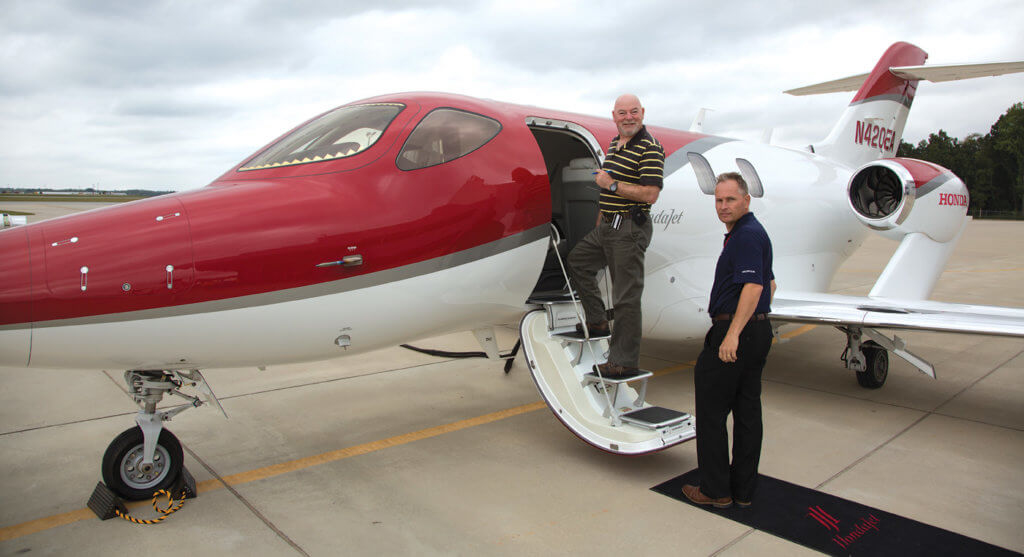
Michimasa Fujino, Honda Aircraft’s visionary founding president and the HondaJet’s chief designer, first sketched the airplane on the back of a calendar in the 1990s. It has been a long road to receipt of the HA-420’s FAA type certificate in December 2015, with the protracted gestation of the HondaJet into a certified airplane foreshadowing Honda’s intentions in aviation.
Honda Aircraft was founded in 2006; at the same time, Greensboro was chosen as the location of its worldwide headquarters. Having spent a day at their 680,000-square-foot, 133-acre, 1,700-person strong facility, there is no doubt of Honda’s commitment to aviation. The gleaming factory, the hangars, and the offices are all clearly far larger than those required for production of a single light jet design.
Honda Aircraft prefers to focus more on its accomplishments than its plans, and when I enquired of my host about possible future direction, I was told, with an expansive wave of her arms, that, “our guests are invited to draw their own conclusions.” I did. Honda is in aviation to stay.
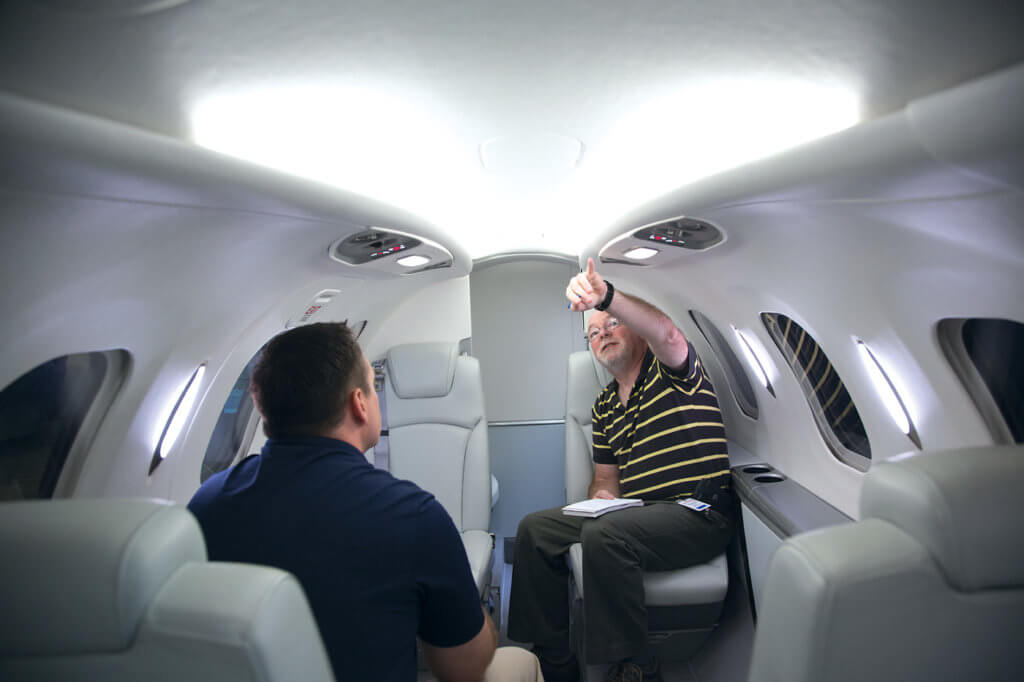
Further evidence of Honda’s commitment is the development of the HF120 engine. In a highly ambitious venture, Honda collaborated with GE in designing a brand new engine for its brand new airplane. How many manufacturers have done that?
The HF120 is a highly efficient twin-spool, medium bypass turbofan engine with 2,050 pounds thrust flat-rated to 25C. It incorporates full-authority digital engine control (FADEC) with a 5,000 hour time-between-overhaul (TBO).
Designing a new airplane is expensive. So is designing a new engine. Have I mentioned that Honda is in aviation to stay?
My Greensboro tour started at Flight Safety International’s (FSI) impressive training facility adjacent to Honda’s factory. It consists of one Level D certified flight simulator (and space for a second), a fixed-base avionics trainer, plus classrooms and extensive training aids. I was fortunate to get a brief spell in the simulator with FSI instructor Erin Brady for cockpit familiarization between busy scheduled training. There was just enough time to simulate a “V1 cut” engine failure on takeoff.
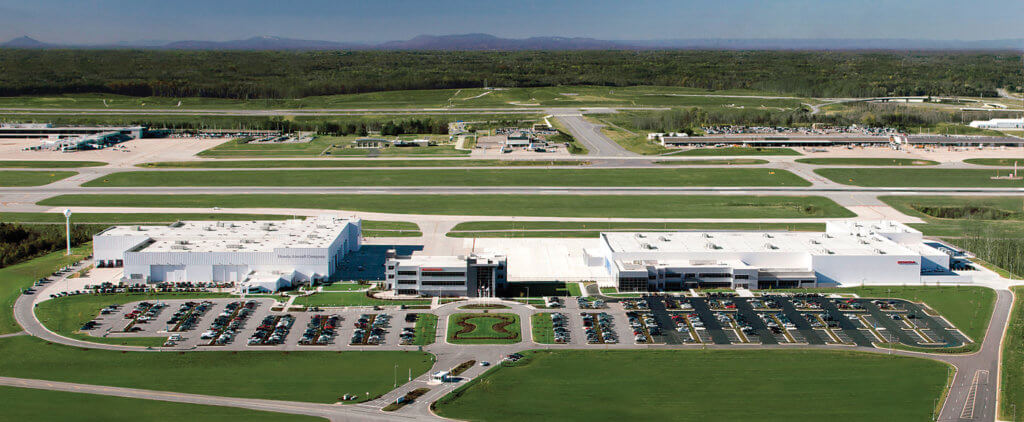
Despite my complete unfamiliarity with the type, single-engine handling was completely conventional; indeed, more conventional than the innovative HondaJet would seem to be. I couldn’t wait to actually go flying.
What’s an OTWEM?
So, what’s so innovative about the HondaJet? Lots, as I discovered during a pre-flight inspection with test pilot Stefan Johansson, senior manager flight operations, who has been intimately involved with the entire development and certification process.
No doubt one first notices the engines, which are mounted on pylons standing on the wings. Honda calls it the over-the-wing engine mount, or OTWEM, a patented design feature it credits with several mystical aerodynamic benefits, such as increasing the drag divergence Mach number.
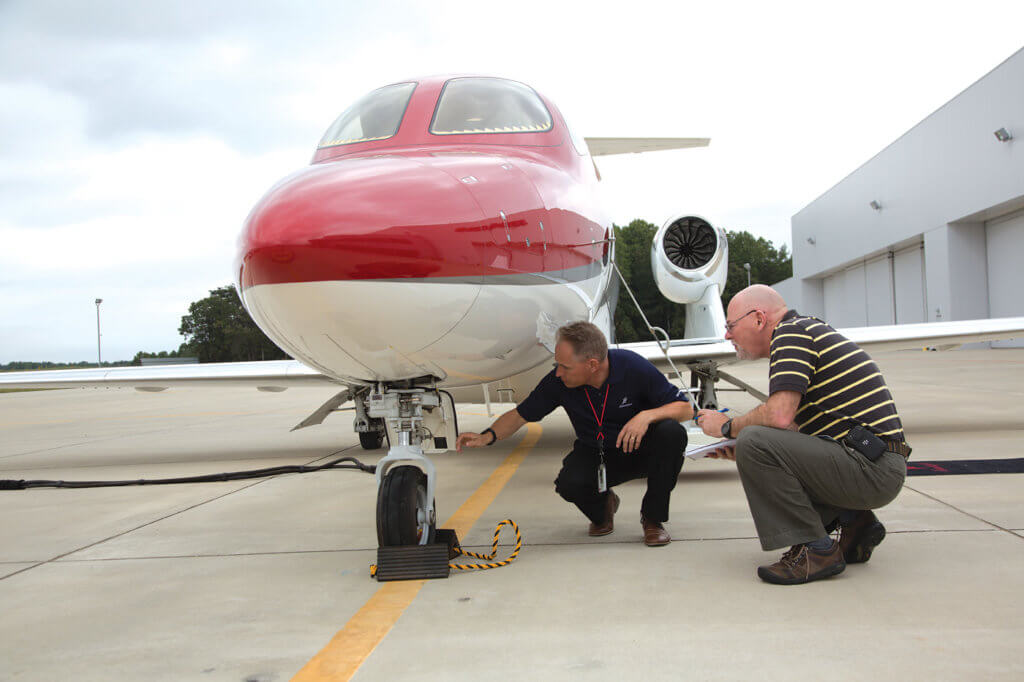
Additionally, situating the heavy engines’ load path on the wing spar, and directly above the undercarriage loads, evidently helps make a lighter, more efficient structure. Honda also credits OTWEM for cabin noise reduction, greater fuel efficiency and increased cabin volume–the latter a consequence of moving the aft cabin bulkhead back. No doubt there are also benefits in terms of systems simplicity, since fuel can be routed up to the engines without passing through the cabin pressure vessel.
The forward fuselage has a subtle but distinctively bulbous shape in order to promote natural laminar flow to reduce drag. The choice of composite materials for the fuselage facilitates manufacturing of the requisite compound curves and yields a very smooth skin to maintain laminar flow and retain structural lightness. Construction quality was as close to perfect as I could discern. Johansson described Fujino’s penchant for conducting quality control inspections from a distance of three inches using a magnifying glass.
Fuelling is accomplished through a single-point gravity feed system, with the filler cap located six feet high on the aft fuselage. “Fuel trucks carry a ladder,” offered Johansson in response to quizzical looks. A remote gauge is optional.
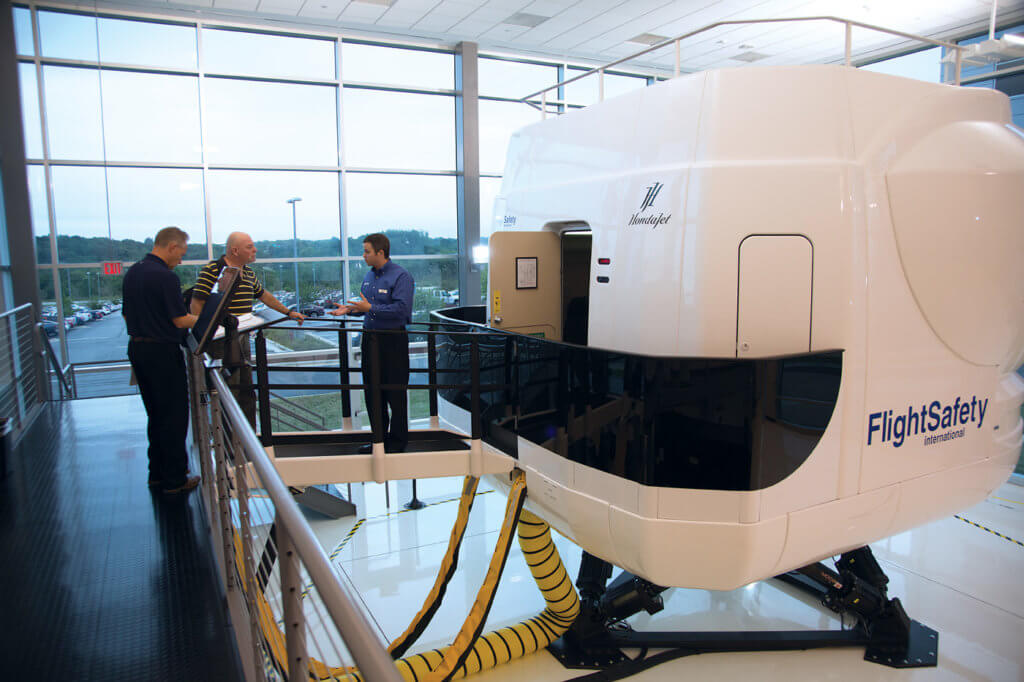
My opportunity to fly the HondaJet occurred later that day. Our well-equipped demonstrator aircraft, registration N420EA, was brand new HondaJet serial number 16. Its basic empty weight was 7,364 pounds. Adding two 185-pound hominids and 2,000 pounds of fuel (out of a maximum capacity of 2,854 pounds) brought our ramp weight to 9,729 pounds. That is, with a 10,680-pound maximum takeoff weight, our basic crew of two and roughly two-thirds fuel, we had room for four passengers and a bit of luggage. Alternatively, had we filled the tanks, our crew of two would have been within a fat suitcase of the maximum gross weight, affording a published maximum range of 1,223 nautical miles.
Taking a Honda out for a spin
I found cockpit ingress easy, and the seats and pedals comfortable and adequately adjustable. The HondaJet cockpit is simply excellent, although the cockpit field of view seemed slightly confining. Circuit breakers are stored under a folding cover, contributing to a tidy, utilitarian workspace. I found the instrument panel simple and logical. Cockpit controls were predominantly pushbutton switch-lights (white is good) and rotary knobs (forward is normal). Cockpit setup could be accomplished at a glance.
The acclaimed and highly functional Garmin G3000 integrated avionics suite is a natural fit for the HondaJet. Its graphical interface is an easy transition for a single pilot; however, the system is no slouch for capability with all of the state-of-the-art avionics acronyms integrated into the new light jet.
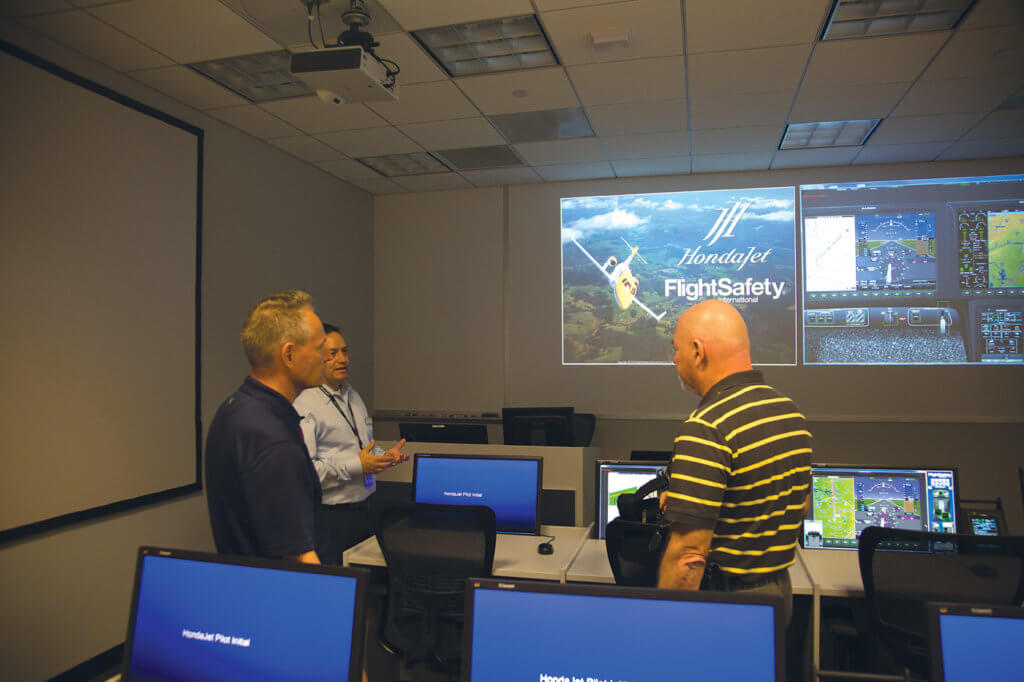
Once we were strapped in, Johansson pointed at the instrument panel and helpfully announced, “The battery switch is over there.” Little further explanation was required. Once the avionics booted up, I was presented with the normal operating checklist on the left half of the left display. Using a neat multi-function scroll wheel in the yoke, the electronic checklist easily guided me through start-up and systems checks.
Garmin determined that our prescribed takeoff speeds would be decision speed (V1) 109 knots indicated airspeed (KIAS), rotation speed (Vr) 115 knots, and single-engine safety speed 120 KIAS. Takeoff demanded that I simply shove the throttles into the Takeoff detent, and I noted strong acceleration and precise steering to our rotation speed of 115 knots. A roughly 10-pound pull predictably pitched us into the command bars, and we were off. Flap retraction, coupled with strong acceleration, necessitated a bit of forward trim–but overall, takeoff was a breeze.
The published climb profile is 210 knots indicated airspeed until 0.57 Mach, realizing an impressive 3,990 feet per minute at sea level under standard conditions. A climb straight to the certified ceiling of FL430 should be achievable at any weight almost any day, taking 24.1 minutes and 444 pounds of fuel, according to the flight manual.
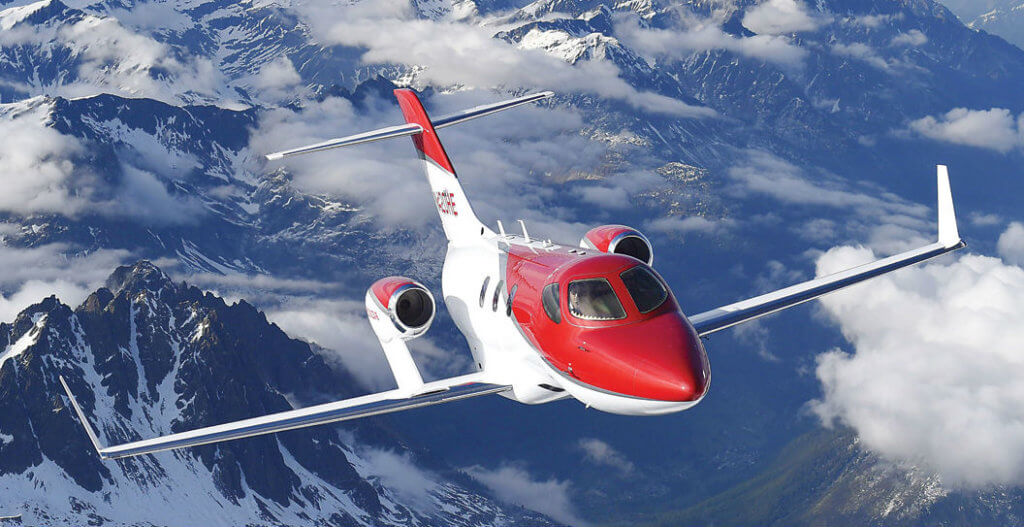
We levelled off at 40,000 feet (FL400), ISA-3C, having burned 500 pounds of fuel since start-up. Our current weight was 9,229 pounds and we established economy cruise conditions, realizing 356 knots true airspeed (0.624 Mach) and burning 290 pounds per hour per engine. The HondaJet was demonstrating impressively efficient performance that was slightly better than the flight manual’s numbers.
At altitudes in the “mid-30s,” and high speed cruise power settings, performance can be pushed to a very respectable 422 KTAS (0.720 M) under standard conditions, expecting a total fuel flow just under 1,100 pounds per hour.
The manual flight controls were just right; harmonized, light and responsive enough to satisfy the owner-pilot. The optional speed brakes consist of two clamshell sections on the tail cone. Another Honda innovation, this is a two-position system, designed such that the speed brakes float against dynamic pressure in flight, providing a fixed increment of drag. Mounting them on the tail keeps the upper wing surface clean in the interest of drag reduction; however, they have negligible effect upon landing performance.
Corner office aloft
A cockpit curtain provides privacy for the passengers. I pulled it shut behind me as I stepped aft to sample how the other half lives. The cabin interior wasn’t the most opulent among bizjets, but I found it bright, thoughtfully designed and functional, with club seating for four, plus an optional side-facing seat opposite the entry door.
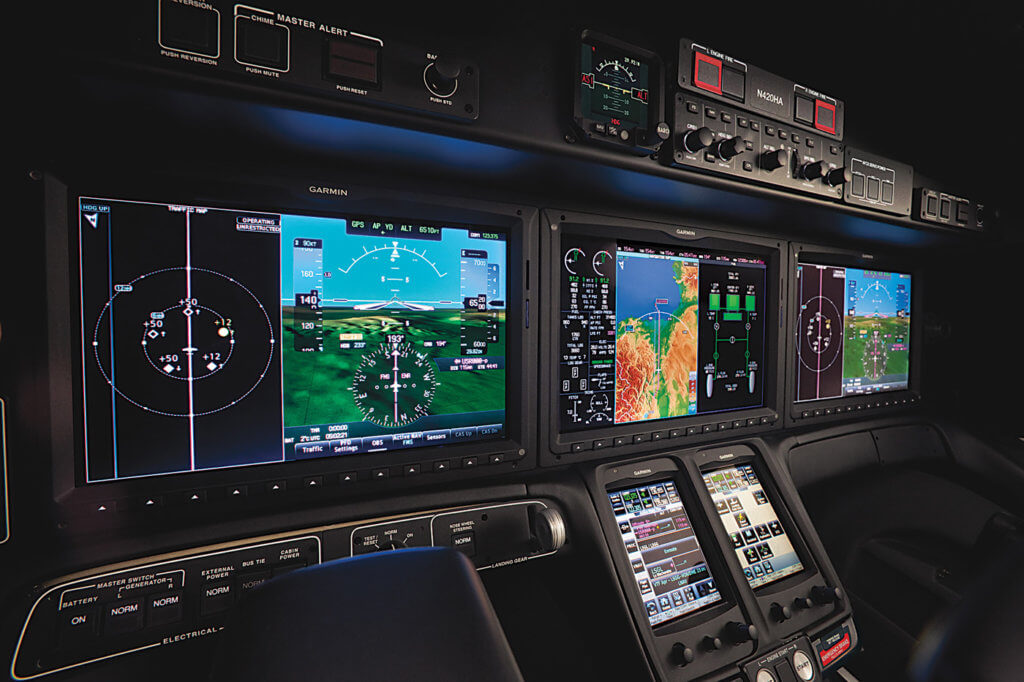
The 86-inch seat pitch is very impressive for a light jet; an advantage of moving the aft fuselage bulkhead into space that would otherwise be occupied by engine structure. Consequently, the folding desk on the right side benefits from actual knee room.
The cabin sound level wouldn’t have disturbed quiet conversation. Honda claims that is a further benefit of the OTWEM configuration, which distances the engines from the fuselage.
The externally-serviced lavatory hides behind a convenient pocket door, and incorporates a cool skylight, which provides light without compromising privacy.
The big news
The story thus far has been about the “jet” part of the word “HondaJet,” but let’s pause to reflect upon the fact that Honda is building airplanes; a development in the aviation industry akin to dropping a shark into an aquarium.
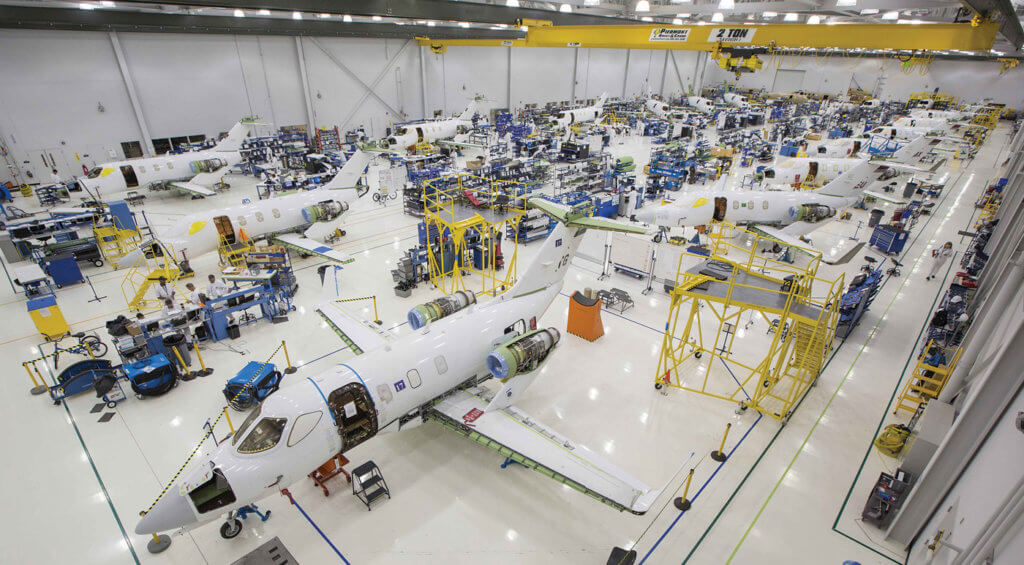
It’s the same Honda, or a subsidiary rather, of the gigantic Honda Motor Company, which reportedly sold about 4.7 million automobiles in its 2016 fiscal year, in addition to its other ventures. What other company in aviation has the resources to build a factory, sustain the workforce payroll and bankroll development of a new airplane for over a decade before they even have a single marketable product? It’s a game changer.
Now, the question is, will the investment pay off?
As of Dec. 20, 2016, Honda Aircraft had delivered 23 aircraft, with an initial production rate of two to three units per month. FAA approval for flight into known icing (FIKI) was granted on Nov. 23, 2016, with Canadian type certification targeted for early 2017.

Honda’s first aeronautical product has proven to be innovative, attractive and eminently competitive in the light jet market. Their offering shows that Honda Aircraft has a willingness to innovate, sound aeronautical engineering skills, a sensitivity for their target market, and a flair for attractive design.
Start thinking of Honda as an airplane company.
Robert Erdos is a contributing editor for Skies magazine. He is a graduate of the U.S. Naval Test Pilot School and a professional test pilot. Also an aviation enthusiast, his spare time activities include displaying vintage airplanes and flying his RV-6 kitplane.
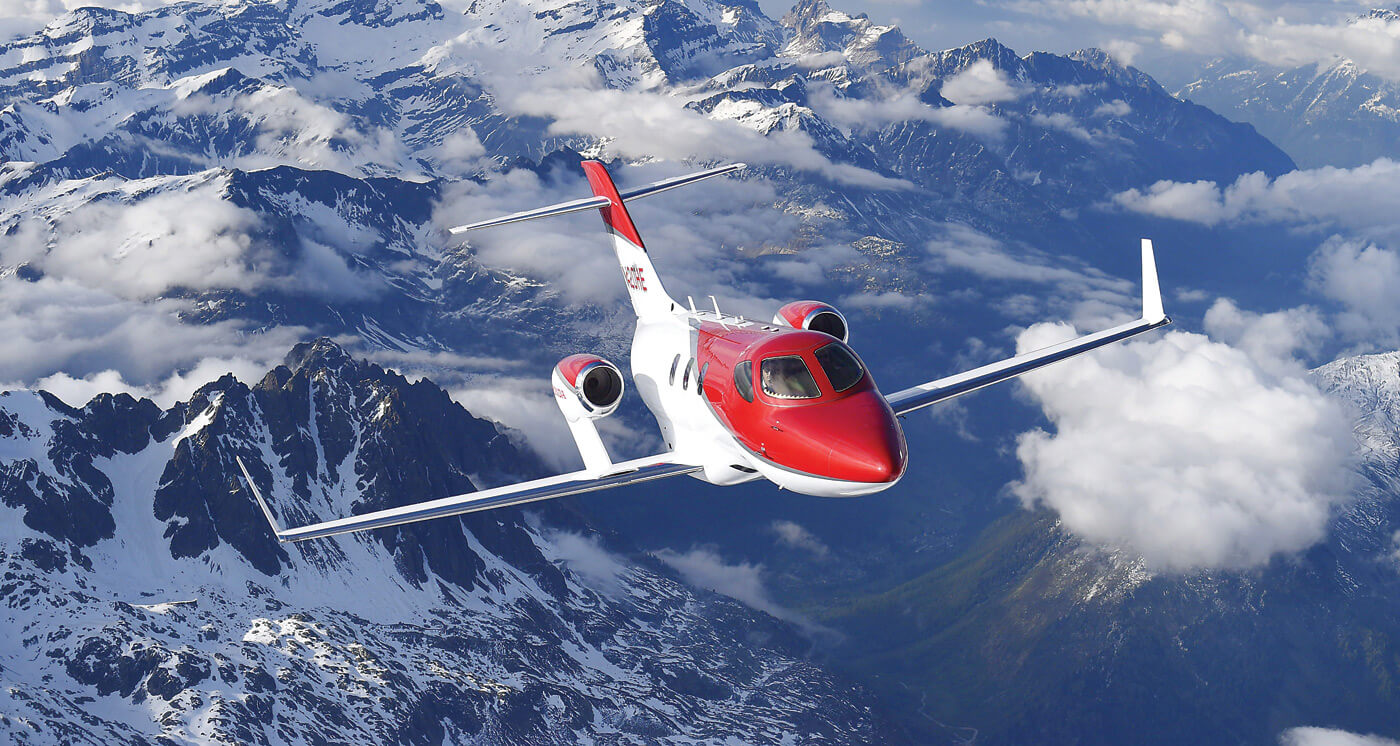

Future dream